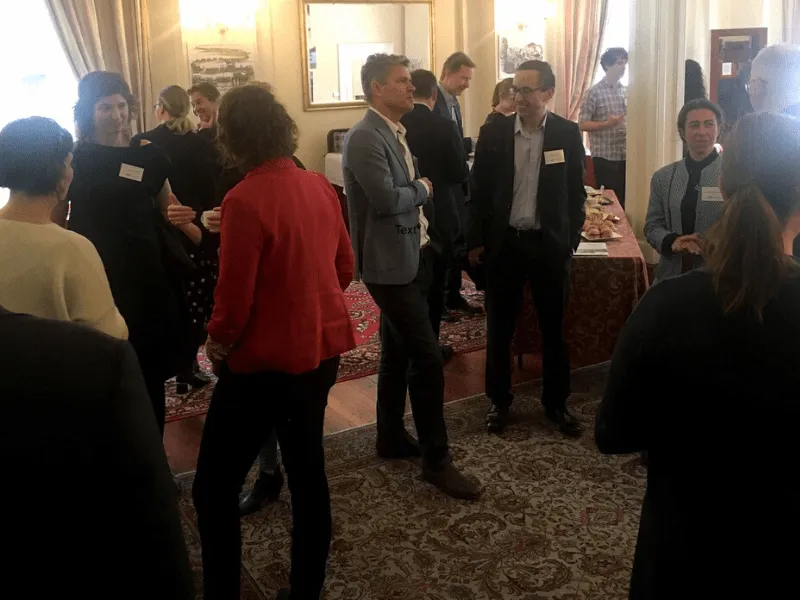Collaboration is key

More than 30 of Melbourne’s science communicators gathered for lunch at the historic Royal Society of Victoria building, Scientell’s home base. A mix of clients, partners and colleagues – ranging from industry, academia and university – came to the event to hear about Scientell’s latest work, but stayed to catch up with familiar faces and swap business cards with new faces.
Simon Torok, co-director of Scientell, opened the event by sharing a few things he and Paul Holper have learned in the first four years of the company. He said much of Scientell’s work involves distilling large amounts of technical information into something that has more impact. While booklets, feature articles, and brochures remain the bread and butter of science communication, Scientell has also embarked on more innovative and creative formats, such as writing ‘cli-fi’ (climate fiction) stories, collaborating with others to produce videos and animations, generating content for an app, and developing educational material for an augmented reality game. Guests were invited to share stories of their experience with unconventional formats of science communication; ultimately, everyone agreed that finding innovative ways to package and deliver scientific information is necessary for a broader and holistic communication strategy.
The invited guest speaker, Dr Jenny Martin, is a science communication educator at the University of Melbourne and long-time collaborator of Scientell’s. Jenny recounted her recent visits to international universities that hold world-leading science communication courses for journalists; she left feeling proud that Melbourne is home to the only science communication course designed specifically for science students. The success of the course can be attested to the fact that many of her students have moved into a broad range of science communication fields; some of these former students were in the room as fellow colleagues.
Jenny shared some practical advice for effective science communication, which can be summed up in a memorable acronym: GAMPER. Jenny encourages her students and colleagues to ask themselves these questions, in this order, before creating any content:
Goal – What are you trying to achieve?
Audience – Who exactly do you want to target? (Zero points if you say ‘the general public’!)
Message – What story do you want to convey?
Platform – What platform (YouTube, Twitter, Ted Talk, book etc) would be most appropriate for your goal, audience and message?
Evaluation – How will you evaluate the effectiveness of your Message?
Refine – Use your metrics from your evaluation to refine and master your message
Simon concluded the event with three key messages: think creatively about the content and delivery; a variety of methods combined can be effective, and collaboration is key.
Author:
Date Posted:
December 12, 2019
